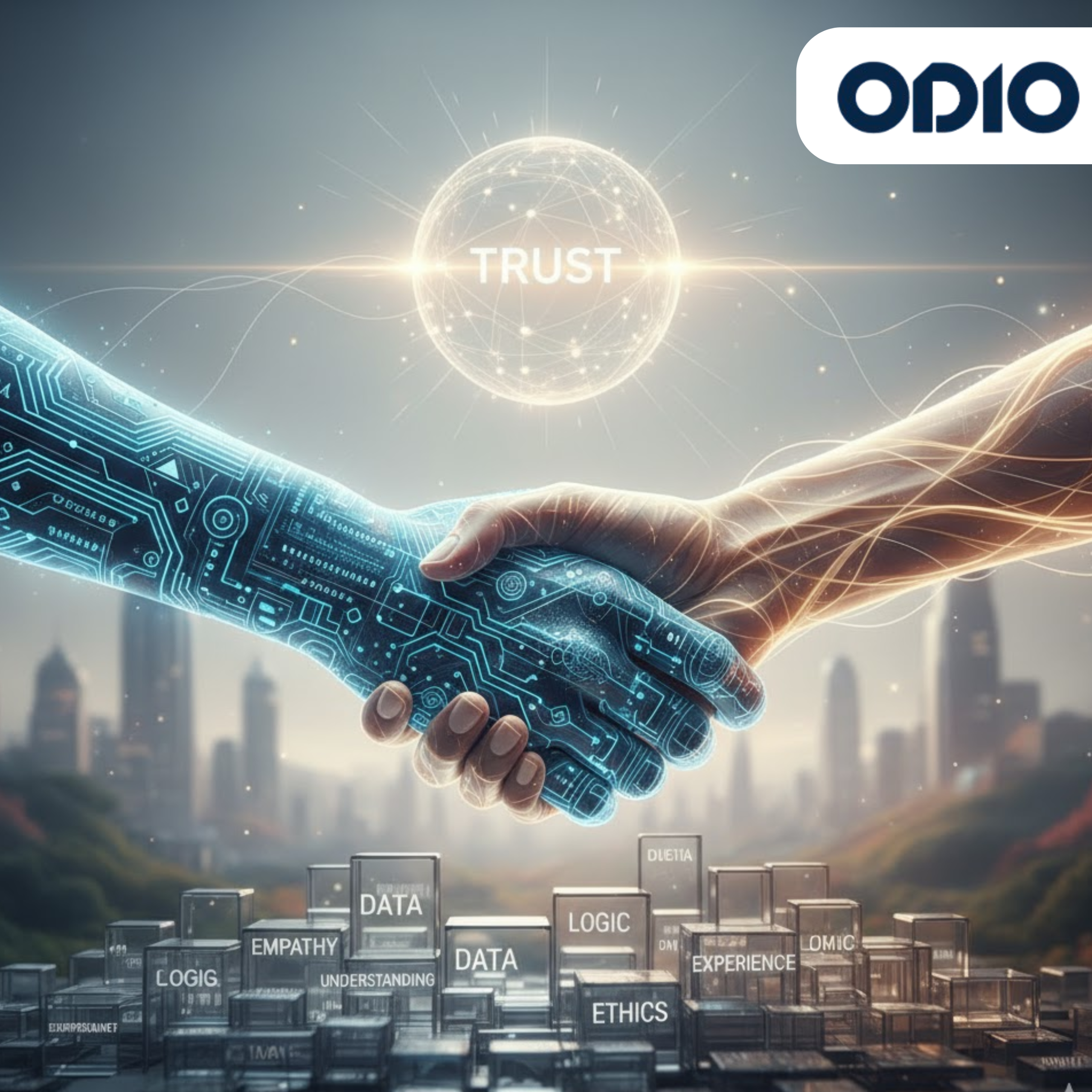
The Fusion of AI and Human Intuition: Building Trust in Digital Interactions
In the rapidly evolving landscape of technology, a silent revolution is underway. It’s not just about faster processors or more complex algorithms; consequently, it’s about a fundamental shift in how we interact with the digital world. At the heart of this transformation lies a powerful, yet often misunderstood, partnership: the fusion of AI and human intuition. This synergy is not about machines replacing human judgment but about augmenting it to build a foundation of unprecedented trust.
For years, AI has been praised for its brute computational force processing vast datasets, identifying patterns, and automating tasks with superhuman speed. However, true trust, the kind that fosters loyalty and authentic engagement, has remained elusive. Why? Because trust is a deeply human emotion, rooted in nuance, empathy, and, crucially, intuition.
The Trust Deficit: Where Pure AI Falls Short
AI, in its purest analytical form, excels at the “what” but often stumbles with the “why.” It can tell you that a customer is clicking away from a page, but it may not grasp the subtle frustration in their navigation pattern that a human would instinctively sense.
For instance:
- A chatbot can provide a pre-programmed answer, but without intuitive understanding, it can miss the underlying anxiety in a user’s query.
- A recommendation engine can suggest products based on past purchases, but it lacks the intuitive leap to understand a sudden change in taste or a deeply personal, unstated need.
This creates a “trust deficit.” Users interact with a system that feels robotic, impersonal, and at times, tone-deaf. Therefore, to bridge this gap, we must move beyond AI as a standalone tool and view it as a component in a larger, human-centric system.
The Power of Synergy: How Intuition Completes the AI Puzzle
Human intuition is our brain’s powerful ability to make rapid, subconscious connections based on experience, emotional cues, and context. It’s the gut feeling, the empathetic response, the creative leap. Similarly, when we infuse AI systems with principles that mimic or incorporate this intuition, we create something far more powerful.
This synergy manifests in several key ways:
- Contextual Awareness: An AI powered by intuitive design doesn’t just process data; it understands context. It can discern between a routine support ticket and a genuinely urgent, emotionally charged request, routing it appropriately. This is a core principle of creating human-centric AI that feels genuinely helpful.
- Emotional Intelligence (EQ): Advanced AI models are now incorporating sentiment analysis and affective computing. As a result, they can detect subtle signs of frustration, joy, or confusion in text or voice, allowing them to respond with appropriate tone and empathy, much like a perceptive human would.
- Predictive Personalization: By combining data-driven patterns with intuitive models of human behavior, AI can move from “what you bought” to “what you might feel like exploring next.” It’s the difference between a generic ad and a genuinely delightful suggestion that feels personally curated.
Building Blocks for a Trustworthy AI-Human Partnership
So, how do we practically build digital experiences that leverage this fusion? Firstly, it requires a deliberate design philosophy.
- Transparency and Explainability (XAI): Trust cannot bloom in a black box. Users need to understand why an AI made a certain recommendation or decision. Explainable AI, which reveals the “reasoning” behind an outcome, is a critical step. For example, if a loan application is denied by an AI, providing a clear, intuitive breakdown of the factors builds more trust than a simple “yes” or “no.”
- Human-in-the-Loop (HITL) Systems: The most effective systems are collaborative. They use AI to handle the heavy lifting of data processing and present insights or options to a human expert, who then applies their intuition and judgment to make the final call. This model is brilliantly explored in our article on The Future of Collaborative Intelligence: Humans and AI as Partners.
- Ethical and Bias-Free Foundations: Intuition is only valuable if it’s fair. An AI trained on biased data will produce biased, untrustworthy outcomes. Therefore, building trust starts long before deployment, with rigorous ethical frameworks and diverse data sets to ensure the AI’s “intuition” is just and equitable.
The Future is Intuitively Digital
Looking ahead, the line between artificial and human intelligence will continue to blur. We are moving towards interfaces that understand not just our commands, but our intentions and emotional states. Ultimately, the goal is to create a digital ecosystem that feels less like using a tool and more like interacting with a perceptive partner.
This seamless integration is the key to the next wave of digital transformation, where technology enhances our humanity rather than detracts from it. To dive deeper into what this future looks like for businesses, consider reading How Empathetic AI is Redefining Customer Experience.
Conclusion: Forging a New Covenant of Trust
The fusion of AI and human intuition is not a distant sci-fi concept; it is the pressing imperative for anyone building digital products and services today. By marrying the scalable, analytical power of AI with the nuanced, empathetic understanding of human intuition, we can finally close the trust deficit.
Therefore, we must champion a approach to technology that values clarity, collaboration, and, above all, the irreplaceable depth of human understanding. The future of digital interaction depends on it.
Ready to build digital experiences that users not only use but truly trust?
At Odio, we specialize in designing and developing intelligent solutions that seamlessly blend data-driven AI with profound human-centric design. Let’s partner to create interactions that feel intuitive, authentic, and built for the future.
Schedule a free consultation with our experts today and let’s build trust together!

